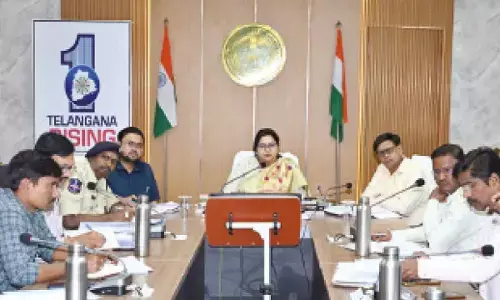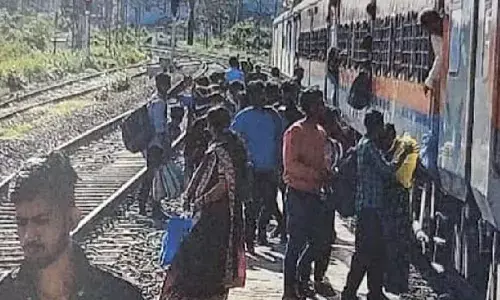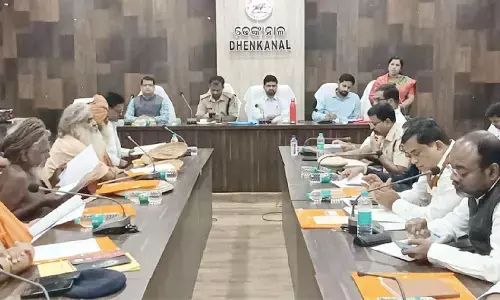Farmer and Farming issues for election manifestos – 2014

Farmer and Farming issues For Election Manifestos – 2014. 'Promises are meant to be broken' is an old adage that is most synonymous with poll promises to farmers by almost all political parties in India. Elections for sixteenth Lok Sabha in India are scheduled for next month.
'Promises are meant to be broken' is an old adage that is most synonymous with poll promises to farmers by almost all political parties in India. Elections for sixteenth Lok Sabha in India are scheduled for next month. As usual political parties talk about agrarian crisis, farming and agriculture only to forget soon after elections. A Manifesto should reflect the aspirations of the masses of which farmers represent around two third and also young people. The election manifestos of parties generally talk about agriculture, water, livelihood security and the plight of farmers but during the election campaign itself, these issues are seldom mentioned, and other useless issues dominate their speeches.
This is mainly due to the fact that farmers are not organized in the country and farmer groups represented by elite have failed to make a serious effort to put agriculture on the top of the political agenda. They have made some attempts in some states but haven’t succeeded so far. It is common that in many states during the elections majority of the farmers forget about farming and start involving in other political issues, sometimes local issues, caste configurations etc..
Agriculture plays a key role in India’s economy by sustaining the livelihood of millions of households with substantial share in the country’s GDP, but in recent years the share of agriculture and its allied sectors in the growth pie has been declining gradually and this has been causing some concerns. There are evidences of a systemic crisis in the agrarian sector reflected largely by the disturbing trends of farmer’s suicide in various parts of the country due to increasing debt, crop failures, competition from the imports etc. The five states Andhra Pradesh, Maharashtra, Karnataka, Madhya Pradesh and Chhattisgarh contribute to 66 per cent of the total farm suicides in India. The land acquisition problem is also a big concern to farmers. It appears that farmer’s issues have taken centre stage in recent years and there is a renewed focus on them among policymakers and the media. However, except for a few surveys and case studies no attention is paid on how a large mass of farmers are living, what their conditions are, and what they are thinking about issues related to them and their sector.
India has made great strides in increasing agricultural production over the last few years. It is high time to stop measuring agricultural development in the form of production and productivity. Now it is time to focus time on increasing farmer income from agriculture leading to prosperity.
Major Problems
A series of constraints and challenges continues to hinder agriculture growth. Fragmented landholding (nearly 80 per cent of the 140 million farming families hold less than two acres of land), continued dependence on monsoon, inadequate irrigation facilities (only 40 percent of cultivable land is irrigated), vulnerability to pest and disease attacks, climate change and risks, lack of rural infrastructure, falling public investment in agriculture and failure to build capacity among farmers to face market risks and volatility are some of the important factors that stymie growth. The agriculture support systems research, extension, credit, subsidies, minimum support prices, market procurement, insurance etc are all designed based on external input based green revolution model creating problems to agriculture sector in the country which include;
- The increasing costs of cultivation due to increased farm wages and un remunerative prices have let to dwindling net incomes for farmers over years.
- The agriculture prices are not fixed taking into livelihood needs of the farmers.
- The rising inflation always had a double impact on farmers with increasing costs of living and decreasing incomes due to reduction in agriculture prices as a result of price intervention mechanisms of the government.
- Minimum Support Prices are announced for 33 commodities and market intervention operations exist only for rice and wheat. So farmers growing other crops are left to the mercy of the markets.
- Removal of quantitative restrictions and allowing cheaper imports as a result of WTO commitments.
- The high external input based agriculture production practices have caused heavy ecological and economic crisis.
- The heavy pesticide usage has polluted the soils and water across the country.
- Chemical fertilizers have killed life of soils and water bodies. The subsidy burden on chemical fertilizers on the exchequer is high and Government is unable to supply the needed fertilizer.
- Seed industry is completely in the hands of corporations with complete failure of institutions (Agriculture university and State Seed Corporation) and regulations (Seed act is kept in abeyance for last four years, cotton seed removed from essential commodities act, still farmers die in police firing standing in long queues for seeds).
- The Genetically modified crops have brought in new threat not only in terms of ecological and economic crisis but also political (farmers and governments completely losing control).
- Groundwater level is decreasing at alarming rate.
The visions of governments for agriculture development seem to exclude majority of the farmers. The farming is moving into highly mechanized, external input agriculture because government policies made us believe that small holder agriculture is not viable. As a result thinking has emerged that 50% of the farmers should be moved out of agriculture in 15 years. But policy-makers fail to recognise that even 20% of them move out, there are no viable alternative livelihoods available either in rural areas or in cities which are already unable to cope with their current expansion.
The government should articulate a clear vision for sustaining agriculture and agriculture-based livelihoods. The goal of agriculture development should be to make farming viable for small, marginal and medium farmers. Some of the measures may include;
- Presently about 15 departments of centre and state are keeping a stranglehold on farmers and this should be remedied by a single window system by establishing a board like in China.
- Remunerative prices for agricultural produce are essential. The prices for agricultural commodities should be based on the real cost of production and linked positively with inflation. The current MSP determination does not ensure remunerative income to farmers, unless an explicit policy is adopted such as (C2 Cost of production + at least 50% as profit) as recommended by the National Farmers’ Commission. The determination of support price should be done transparently at the state level and recommended to the CACP. The MSPs should be announced before the crop season begins. As suggested by Swaminathan and Jayati Ghosh Committees market stabilization fund must be created.
- Labour wage support should be given for all agricultural operations. Presently the ironic situation is that agriculture workers are unable get employment and farmers are unable to afford agriculture workers due to increasing costs of living. The government should provide input subsidy in the form of labour wages (up to 100 days in a calendar year) to the farmer to monetize the use of family labour or to pay external labour engaged on the farm. This should include all agricultural operations from sowing to harvesting. This can be operational zed by linking NREGS to farmers and agricultural operations. This will also provide additional help to the agriculture workers in the villages.
- Rural employment opportunities should be increased by promoting post-harvest operations and value addition enterprises at the village level and this will increase the net income of farmers. The promotion of agriculture cantered small scale rural industry, the rural economy gets a big boost and also corrects the rural-urban imbalance and prevents migration.
- Greenhouse cultivation, hydroponics and micro irrigation must be encouraged with subsidies for all categories of farmers.
- ICT use must br given thrust particularly for delivery of extension services.
- Emphasis should be given to restoration of tanks and check dams rather than going for big projects.
- Disasters need special attention in agriculture and National Disaster Management Fund must be created to help farmers.
India has world’s one-fourth farming population, about 600 million farmers and due to illiteracy they have failed to use the democratic process to their advantage. There is no point in blaming anybody for farmer’s plight but the fact is they have been relegated to the bottom of the pit. We must make sure that all political parties include farmer’s issues as part of their manifesto political will can change the lives of people, and it is the earnest duty of all political parties to support the cause of farmers for overall prosperity.



















